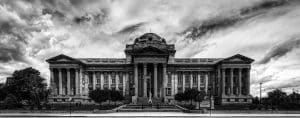Pattern Poetry: The Language of Print Design
Pattern Poetry, also known as Shape Poetry or Visual Poetry, is a form of literary and visual art that combines the aesthetics of both poetry and graphic design. It uses typography, images, and layout to create meaning and convey emotions, making it an effective tool for communication and self-expression.
The concept of pattern poetry dates back to ancient civilizations, with examples found in Greek and Egyptian tomb inscriptions. However, it gained popularity during the Renaissance period, where poets like George Herbert and John Donne experimented with the use of shape and form in their works. In recent years, pattern poetry has seen a resurgence in the field of print design, with modern poets and designers pushing the boundaries of traditional forms and techniques.
Patterns are defined as a repeated decorative design or motif, often found in nature and used in various art forms. In pattern poetry, words and images are arranged in a deliberate and creative manner to create a visual representation of the poem’s subject matter. It is a holistic approach to poetry, where the physical appearance of the text is just as crucial as the words themselves.
The Language of Print Design is an essential aspect of pattern poetry. As a form of visual art, print design relies on elements like color, texture, and layout to convey a message and evoke emotions. Pattern poetry takes this a step further by utilizing these design elements in the formation of the text itself. Letters, words, and sentences are arranged to create patterns that add depth and meaning to the poem.
One of the most challenging aspects of pattern poetry is striking a balance between form and content. While the visual appearance of the poem is crucial, the words must also hold their weight in meaning and flow. This requires a deep understanding of both poetry and graphic design principles. In this way, pattern poetry is a unique collaboration of two forms of art, where the written word and visual elements work together to create a powerful and cohesive piece.
Apart from its visual appeal, pattern poetry also has a functional purpose. The use of repetition and symmetry in the design of the text helps guide the reader’s eyes and control the pace of the reading. This can enhance the overall reading experience, making the poem more impactful and memorable.
As with any art form, the possibilities of pattern poetry are endless. It allows for experimentation and creativity, with no set rules or limitations. Modern artists and designers are taking full advantage of this freedom, using innovative techniques and technologies to push the boundaries of traditional pattern poetry.
In today’s digital age, pattern poetry has found a new platform for its expression. With the rise of social media and digital publishing, pattern poetry has gained a wider audience and has become more accessible to the general public. This has also opened up new possibilities for collaboration between poets and designers on a global scale, and has sparked a renewed interest in the art form.
In conclusion, pattern poetry is a beautiful and unique combination of poetry and print design. It allows for a deeper level of expression and understanding, making it a powerful communication tool. As the language of print design, it adds an element of visual appeal to poetry, making it more engaging and memorable. With its resurgence in recent years, pattern poetry continues to evolve and captivate audiences, proving its timeless relevance in the world of art and communication.









